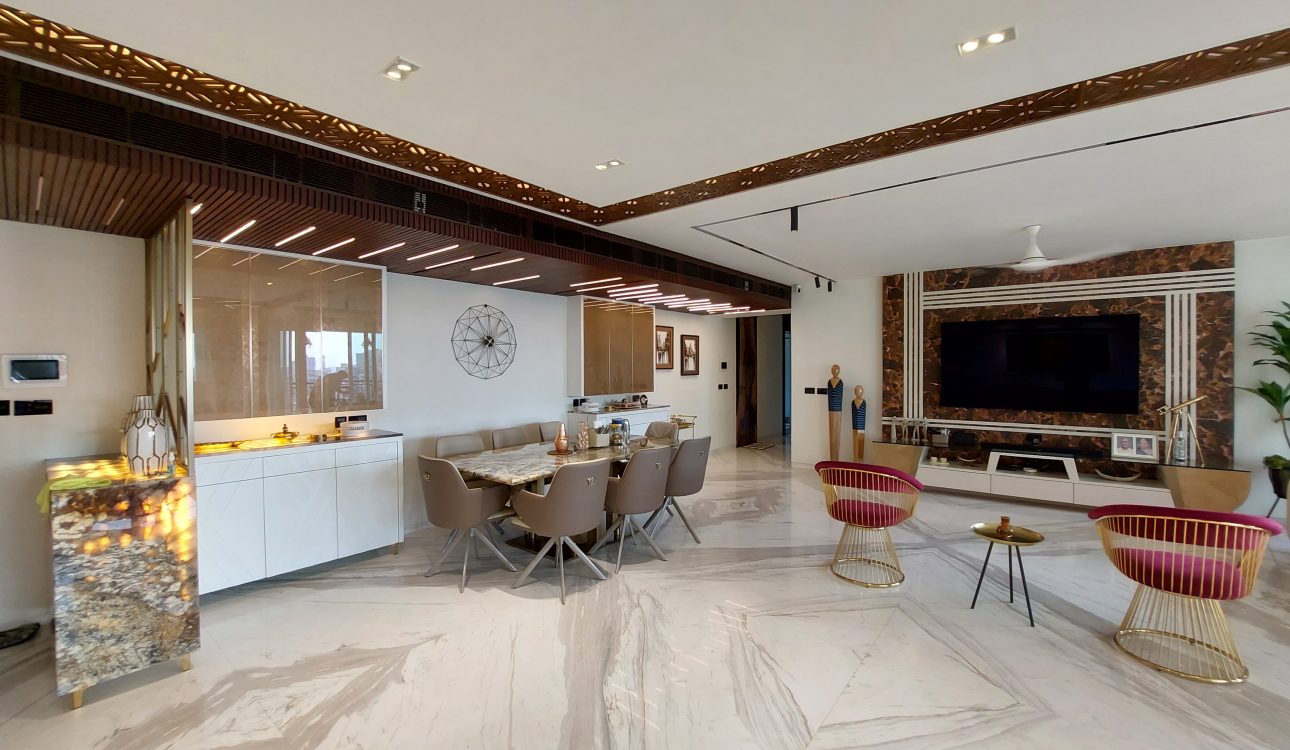Designing a home space with a modern interior focuses on simplicity, functionality, and a clean aesthetic. This guide provides a structured approach, covering essential aspects like planning, color schemes, furniture selection, lighting, and decor. By incorporating minimalist principles, neutral palettes, natural materials, and smart technology, you can create a cohesive, stylish, and practical modern living space. Regular maintenance and personal touches ensure the design remains fresh and uniquely yours.
I. Introduction to Modern Interior Design
- Definition: Modern interior design is characterized by simplicity, clean lines, and a focus on function.
- Key Elements: Open spaces, minimalistic decor, neutral color palettes, natural materials, and functional furniture.
II. Planning Your Space
- Assess Your Needs: Identify the purpose of each room and the requirements of its occupants.
- Living room: space for relaxation and entertainment.
- Kitchen: functional and efficient workspace.
- Bedroom: comfortable and restful environment.
- Create a Layout: Develop a floor plan to arrange furniture and define areas.
- Use design software or apps for visual planning.
- Consider traffic flow and space utilization.
- Set a Budget: Determine your budget for furniture, decor, and renovations.
- Allocate funds to essential items first.
- Plan for unexpected expenses.
III. Color Scheme
- Neutral Base: Use a neutral palette as the foundation (whites, grays, beiges).
- Provides a calm and cohesive look.
- Allows flexibility with decor changes.
- Accent Colors: Introduce accent colors through accessories and artwork.
- Use bold colors sparingly to avoid overwhelming the space.
- Common accent colors include black, navy, and muted tones.
- Consistency: Maintain a consistent color scheme throughout the home.
- Ensure colors complement each other.
- Use the same tones in different rooms for unity.
IV. Furniture Selection
- Functional Pieces: Choose furniture that is practical and serves multiple purposes.
- Examples: storage beds, extendable dining tables.
- Clean Lines: Opt for furniture with straight, simple lines.
- Avoid ornate and overly detailed designs.
- Quality over Quantity: Invest in a few high-quality pieces rather than many low-quality items.
- Focus on durability and timeless design.
V. Lighting
- Natural Light: Maximize natural light with large windows and minimal window treatments.
- Use sheer curtains or blinds to control light without blocking it.
- Layered Lighting: Combine ambient, task, and accent lighting.
- Ambient: General illumination (ceiling lights, chandeliers).
- Task: Specific activities (desk lamps, kitchen under-cabinet lights).
- Accent: Highlight features (spotlights, wall sconces).
- Modern Fixtures: Choose sleek, contemporary lighting fixtures.
- Examples: pendant lights, recessed lighting, floor lamps.
VI. Flooring and Wall Treatments
- Hardwood Floors: Opt for hardwood, laminate, or polished concrete.
- Easy to maintain and timeless.
- Area Rugs: Use rugs to define spaces and add warmth.
- Select rugs with simple patterns and neutral colors.
- Wall Finishes: Keep walls simple with paint or wallpaper in neutral tones.
- Consider an accent wall for visual interest.
- Use textures like matte, satin, or semi-gloss finishes.
VII. Decorative Elements
- Minimal Decor: Choose a few statement pieces rather than overcrowding the space.
- Examples: a large painting, a unique sculpture.
- Natural Materials: Incorporate wood, metal, glass, and stone elements.
- Add warmth and texture to the space.
- Artwork: Select modern artwork and frame it simply.
- Use black or white frames for a cohesive look.
VIII. Storage Solutions
- Built-in Storage: Utilize built-in shelves and cabinets to save space and reduce clutter.
- Examples: floor-to-ceiling bookshelves, built-in wardrobes.
- Multi-functional Furniture: Choose furniture with storage capabilities.
- Examples: ottomans with storage, coffee tables with drawers.
- Declutter: Regularly remove unnecessary items to maintain a clean, modern look.
- Practice minimalism by keeping only what you need and love.
IX. Technology Integration
- Smart Home Devices: Integrate smart lighting, thermostats, and security systems.
- Examples: smart bulbs, smart locks, smart speakers.
- Concealed Wiring: Hide wires and cables to keep the space tidy.
- Use cable management solutions like cord covers and clips.
- Modern Appliances: Choose sleek, modern appliances that blend with the overall design.
- Examples: stainless steel or black appliances.
X. Personal Touches
- Unique Items: Add personal touches with unique items like travel souvenirs, family photos, or heirlooms.
- Display items in a way that enhances the modern aesthetic.
- Balanced Display: Ensure personal items are displayed in a way that maintains the modern aesthetic.
- Avoid overcrowding surfaces and keep displays balanced.
XI. Final Touches
- Greenery: Incorporate indoor plants for a touch of nature and to improve air quality.
- Choose plants that thrive indoors and require minimal maintenance.
- Regular Maintenance: Keep the space clean and organized to preserve the modern look.
- Develop a cleaning routine to maintain order.
- Adaptability: Be open to evolving the design as trends and personal preferences change.
- Update decor and accessories to keep the space fresh and current.
Conclusion
By following this detailed content, you can create a modern interior that is both stylish and functional, reflecting your personal taste while adhering to modern design principles.It involves embracing minimalism, using a neutral color palette, maximizing natural light, and incorporating functional furniture and natural materials. Focus on open spaces, layered lighting, smart technology, and adding personal touches. Regular maintenance and adaptability are crucial for maintaining the modern aesthetic.
























